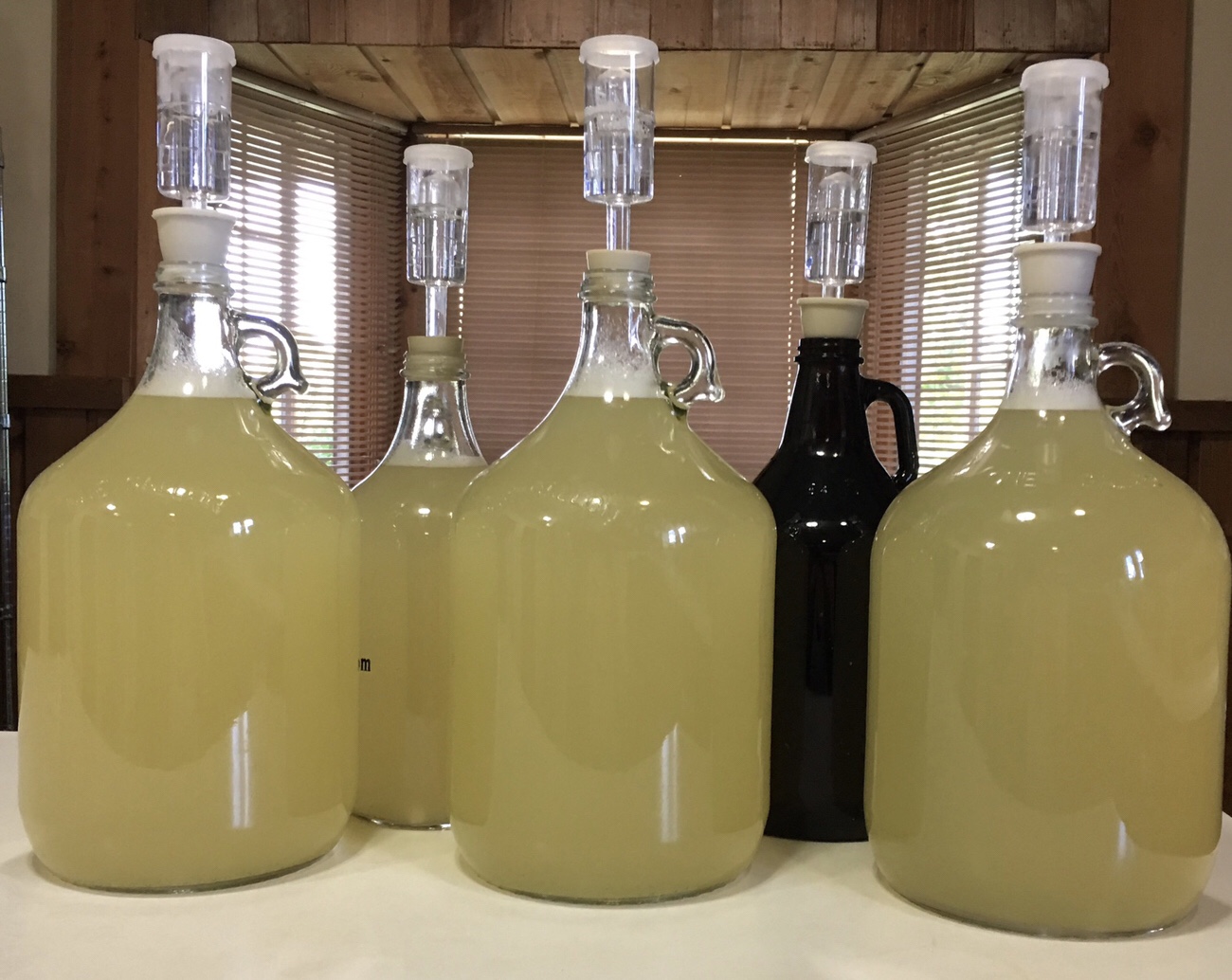
So your wine has fermented, you’ve racked it to a clean carboy a couple of times to get the wine off the sediment, and now you’re ready to bottle it. You have clean, sanitized bottles, new corks, and a floor corker ready…right?
Why a floor corker, given the cost? So you can avoid the aggravation and unsightliness of a hand corker, of course! I speak from experience: save yourself the hassle of wrangling a hand corker (and the wonky results) and just get a floor corker. Like many new winemakers, I opted first for a hand corker because it was cheap and I didn’t think I’d be using it all that often (right…). It was terrible: two people were needed for the job (one to hold the bottle steady and the other to cork it) and it would push the corks in crooked. Um, no. After about a case of badly corked bottles, I bit the bullet and bought a good floor corker…and it’s actually been a pleasure to cork bottles perfectly.
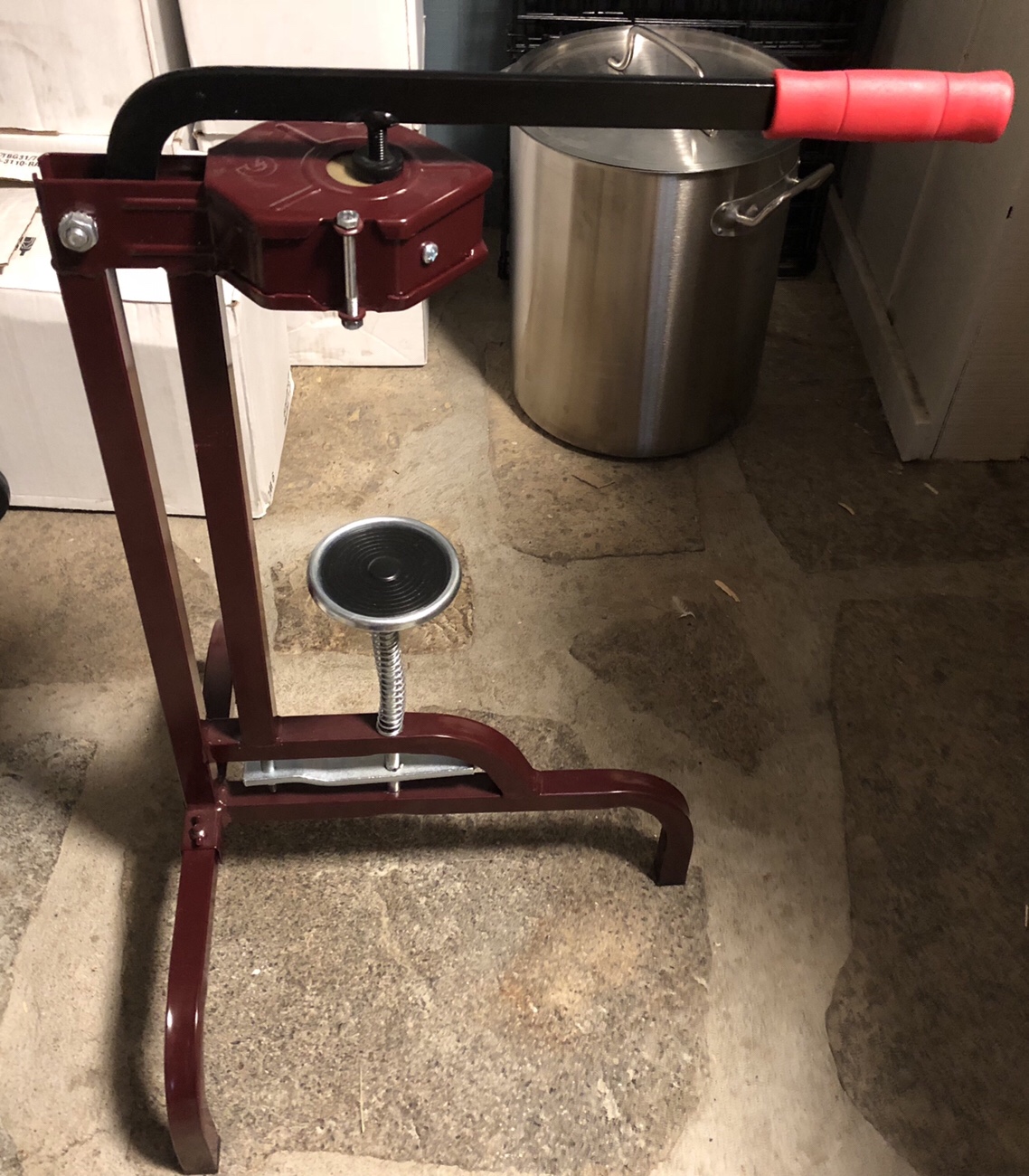
So how do you know when your wine is ready for bottling? There are ways to check, such as: (1) using a hydrometer, ensure the specific gravity (SG) is below .998; and (2) visually confirm that there are no bubbles indicating activity is still occurring. Bottling cloudy wine is frowned upon because the sediment could cause “off” flavors, so the wine needs to clear prior to bottling. Bottling wine before the fermentation has finished can result in pressure building up the bottles, projectile corks, messes…clearly, it should be avoided. In addition, some wines will ferment dry – the right amount of added sugar can turn a puckeringly dry wine into a luscious libation, and really bring out big, juicy flavors.
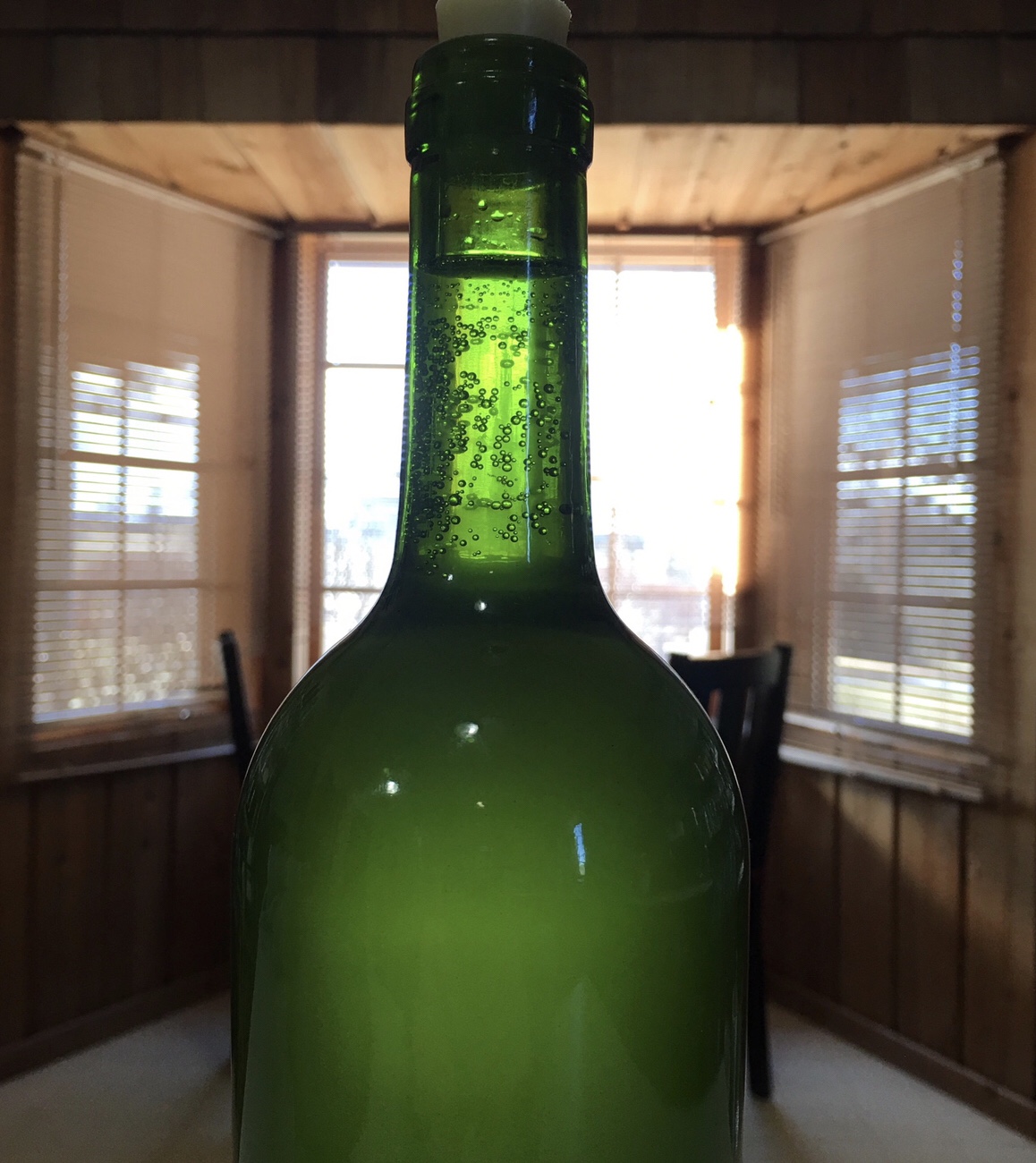
I address these scenarios as follows: I allow wines to ferment dry on purpose to ensure that fermentation has stopped. I then bottle the wine, knowing it will need backsweetening when it’s poured. So, rather than use chemical stabilizers and adding sugar to the bottle before corking it, I simply sweeten the wine to taste when pouring it to drink. This approach allows each individual to select the level of sweetness they desire (and we know individual tastes vary), as well as choose the type of sweetener they wish to use (we keep a variety of syrups on hand for this purpose, including unflavored, black locust flower, lemon balm, violet, and Queen Anne’s Lace). As you can imagine, the choice of syrup will influence the wine’s flavor (and potentially, the color) and offers the ability to create surprising and unique flavors. And, frankly, it’s fun!
Once those beautiful bottles of wine are corked, I add a simple label that indicates the type of wine and date made. There are many companies offering custom wine labels and labels you can print, yourself, and this would be the route I’d go if I were planning on offering the bottles as gifts to friends because a nice wine bottle label can really make the wine look professionally made. The bottles I store in the basement bar are really just for my consumption, so a plain tape label makes more sense to me. Do label them, though, or you’ll find yourself with an unlabeled “surprise” bottle someday.
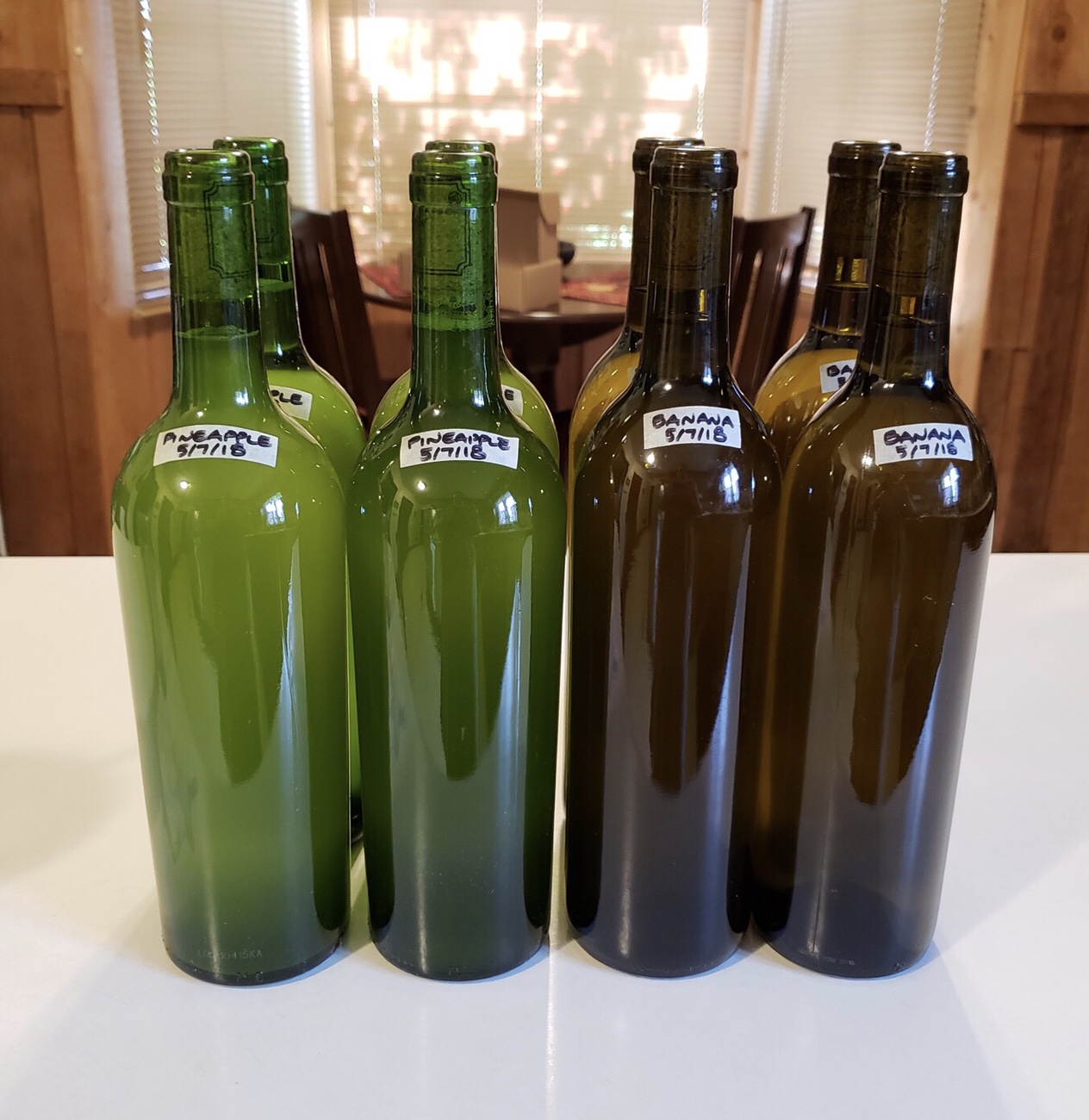
I store all of my bottles on their sides in a cool, dark area. It’s important for the bottle’s cork to stay wet to perform properly (keep the wine’s airtight seal). You could buy a fancy wine rack or cooler…or make a livestock panel wine rack – the livestock panel ones are inexpensive to make and high capacity. I’ve seen one in person and they look great. Regardless of how you choose to store your bottles, make sure they’re on their sides if you use actual (non-synthetic) corks because they’re intended to remain wet.
When you reach for that bottle of craft country wine – one you made and bottled – you’ll really feel a sense of personal satisfaction. You’re a winemaker!
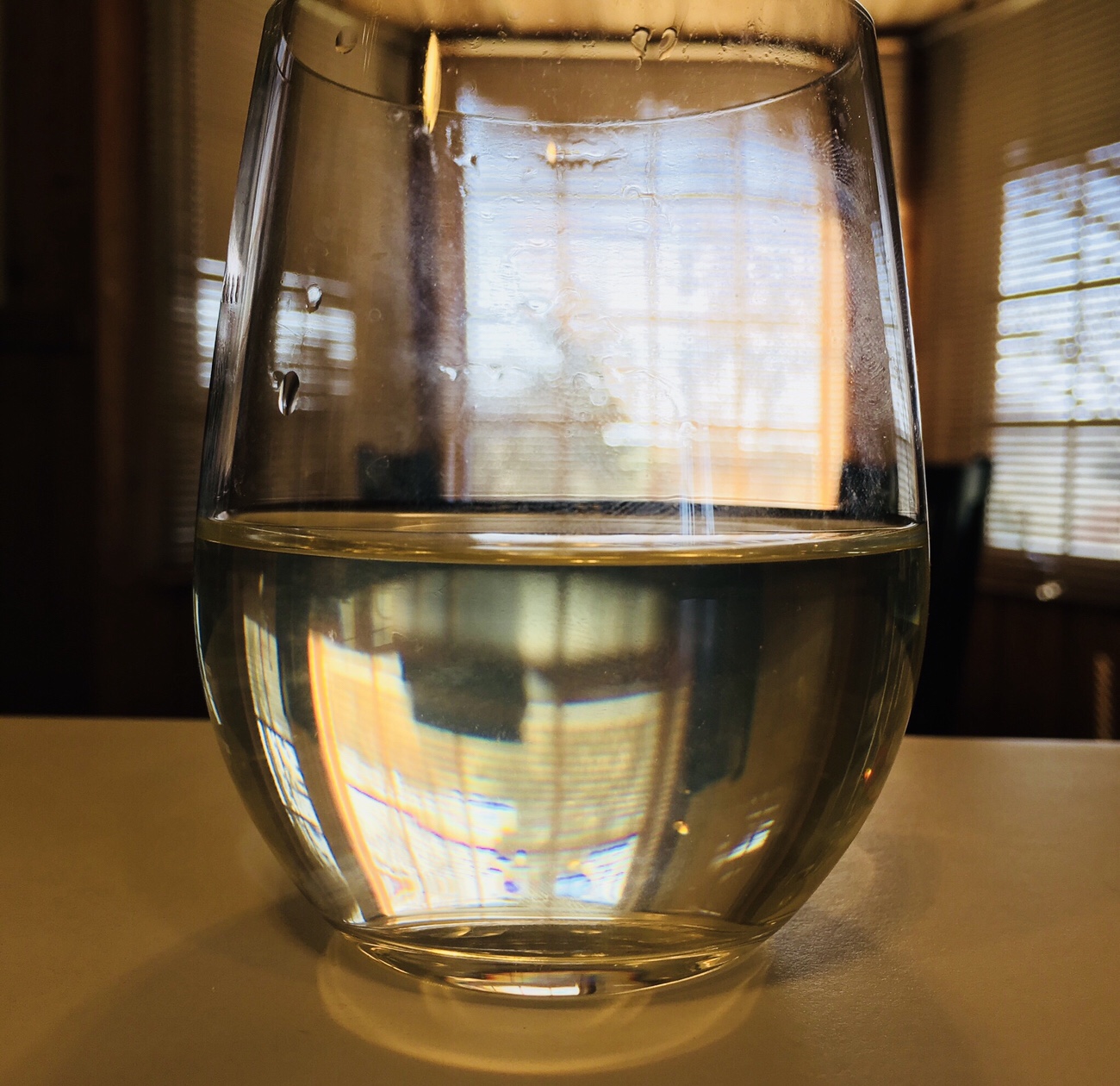
Clear enough for you?
Tip: check sites like Craigslist for winemaking and brewing equipment, as you may be able to find some excellent bargains from people selling off their equipment. I’ve purchased used glass 5 gallon carboys and 1 gallon wine jugs locally at a significant savings over buying them new (especially if you factor in shipping costs) – at worst, all they needed was a thorough cleaning (which you’d do, anyway, even with a new bottle, right?) and they were ready to be put to work!
